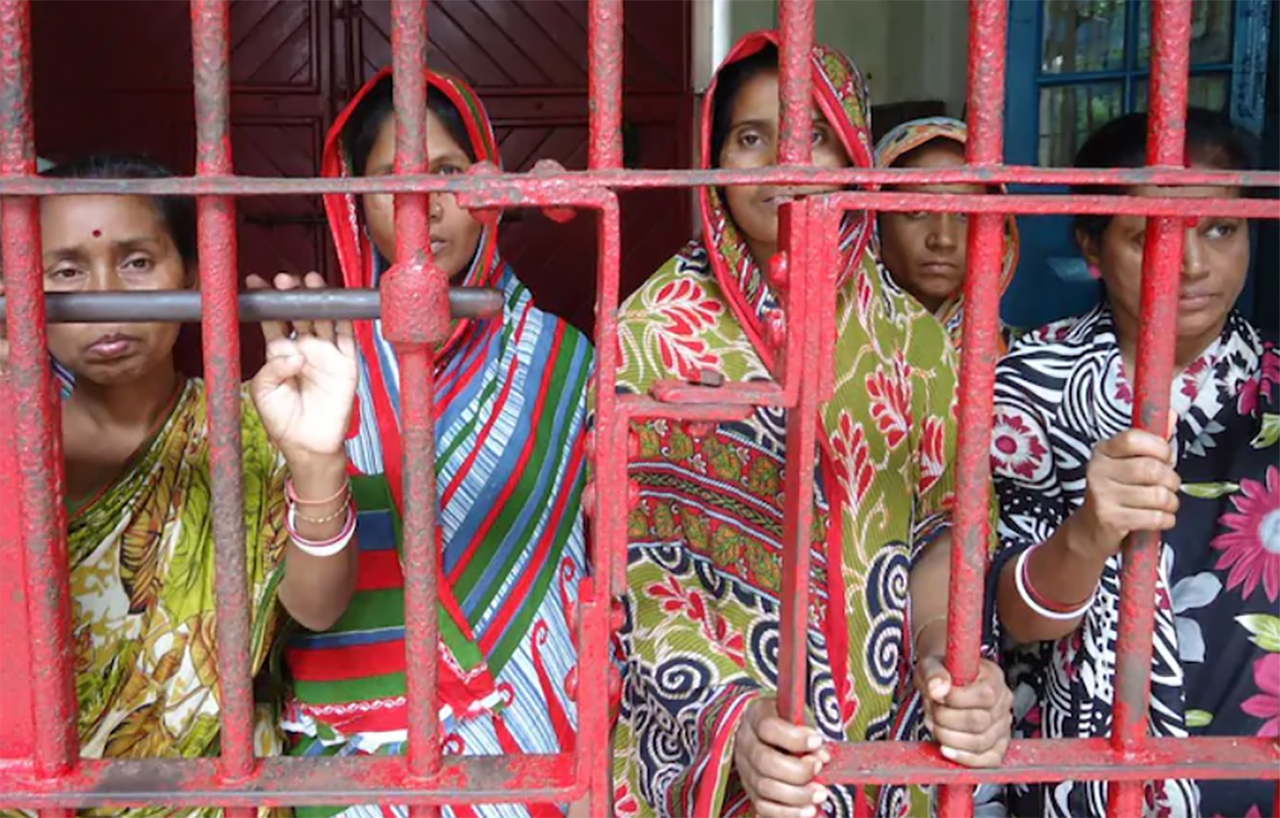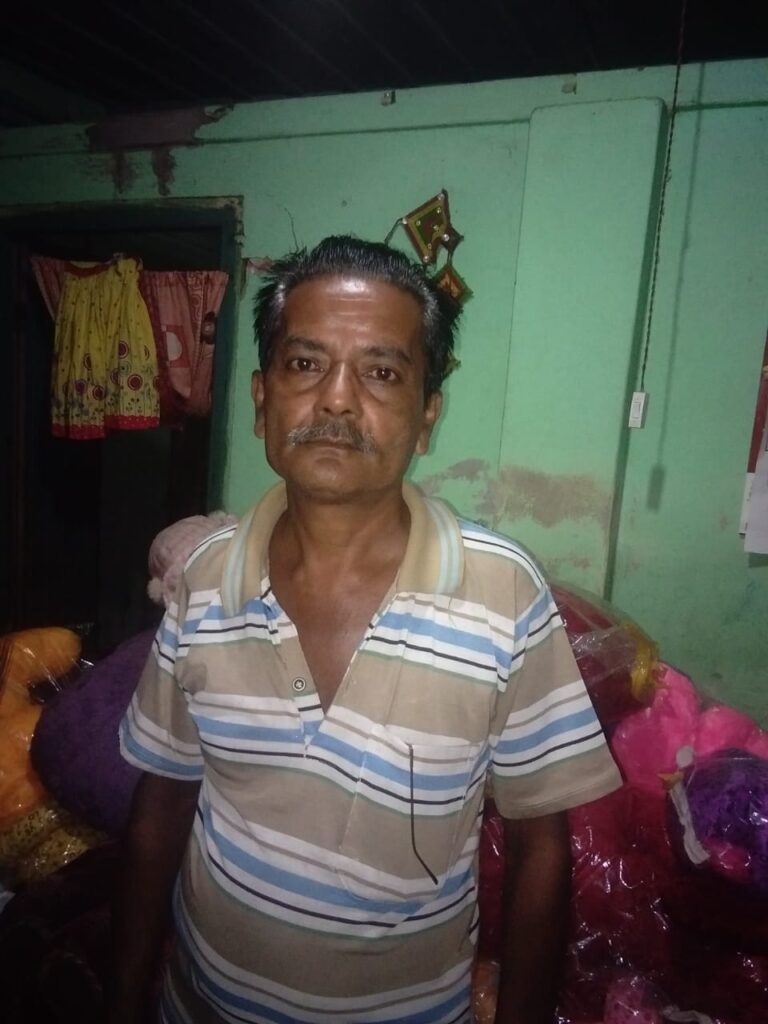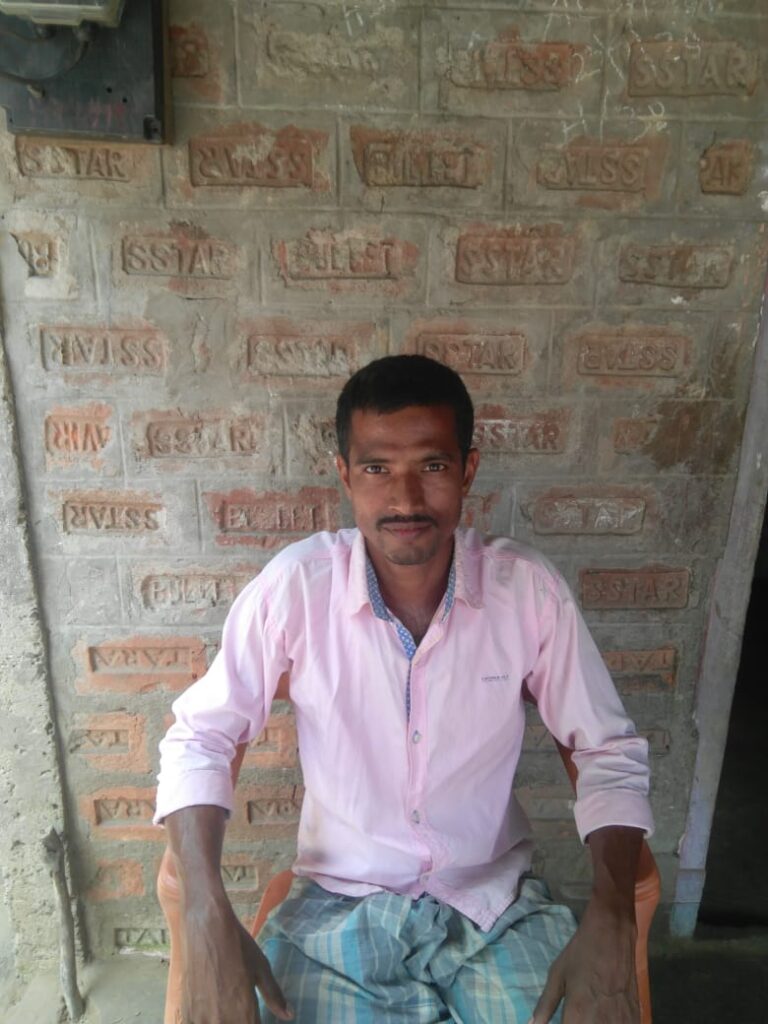Historically, the issues of “indigeneity” and “immigration” have faced each other in Assam, thus dividing the polity. Such a division has often exploded during the recent debates around NRC and CAA. However, the fates of millions in Assam, now, are predicated upon their ability to raise labour and indigeneity together, and not against each other. Otherwise, the state will succeed in creating through detention centres, a prison system, the threat of precisely which, will help manage the labouring population, writes Debapriya Shome.
The Covid-19 Pandemic, amongst other things, has provided the Indian society, which otherwise revels in its preoccupation with festivals of ‘democracy’ and ‘development’, to reflect upon the worth of the labour of the migrants with which it manufactures spectacles, but simultaneously chooses to dispossess. The mass exodus of the migrants from the citadels of the Indian growth story has cut open the underground as shown in Fritz Lang’s film Metropolis. The bombastic growth figures, as it were, never trickled down.
The “immigrant”, however, has long been a figure which has divided the polity in Assam. Similarly or dissimilarly, the situation in Assam where the immigrant— the cause of veritable uproar for over a century (even before India gained her independence), demands a closure of the beleaguered foreigners’ issue. However, it would be wishful thinking, if one believes that there is any easy closure when a history, which is embedded in deep-seated anxieties and sectarian divide, looms overhead.
The NRC exercise after its completion in August 2019, stripped 1.9 million people hitherto of their Indian citizenship. What cribs them now day and night, is their perennial burden of statelessness. Some are even incarcerated in the detention centres. The Home Minister notified the parliament that 3,331 alleged ‘foreigners’ are spread over six detention centres on 17 March, 2020. These centres are presently located within the existing jails, with the exception of the under-construction detention centre in Matia (Goalpara)— speculated to be opening soon. The pan-India anti- NRC- CAA movement did highlight to some extent the conditions existent in these facilities . But despite such discussions, a shroud of inaccessibility of information remains.
To comprehend the NRC debacle, and the overarching realities of detention centres, one needs to learn from its worst victims – the so-called foreigners. I interviewed former detainee Joydev Ghosh — released from Silchar detention centre on 5th March, 2020. Joydev Ghosh is 56 years old, who was arrested in 2019 because he could not attend a tribunal hearing. However, the state did not deem it necessary to take into regard — that his absence was borne out of him being with his 17 years old son — battling blood-cancer, who ultimately succumbed to the deadly disease — just two months before his arrest.
When I arrived at his house at Badarpur, I learnt that the lane his house was situated in, had seen a surge in Covid-19 cases, and was going to be declared a containment zone. A man who was inflicted with the loss of his only son, his small job, his citizenship, and then was detained for almost a year — when he finally gets bail — he finds himself in the midst of a pandemic. One could immediately sense the anguish in his eyes, yearning for respite. He narrated to me the details of the dingy cell — where around 50 men were cramped in, living in terrible conditions. Living in the midst of lack of proper sanitation and food, the one TV set would help them pass their time.
When I asked him about NRC, CAA, and the related issues — he was dazed and at loss. His younger brother, Deepak jumped in to answer, and spoke at length about various issues. He was clearly disappointed with PM Modi for not fulfilling his promise of abolishing detention centres that he made in 2014, before General elections. In regards to CAA, he said it was not meant for his elder brother who is a genuine Indian and already has the valid documents. He argued, to claim that his elder brother came from Bangladesh, would now mean, all his documents are fraudulent, and would put the whole family in travails, which otherwise have their names featured in the final list.
Deepak, who runs a small cosmetics shop, was also distressed with the Clause 6 of Assam Accord. This would mean rights related to land, jobs, electoral seats would be reserved for the Assamese/Khilonjiya. Therefore, even if CAA provides citizenship, it would be a disproportionate one. Moreover, families such as his— who do not have their names in the 1951 NRC — would also be left out of such entitlements. Simply put, one can be a citizen, but can’t avail government jobs, or buy land, or contest elections.
The exact rules are yet to be finalised, so the nitty-gritty of Clause 6, still remains speculative. It is supposed to be published soon, as the high-powered committee vested with the task of defining it, has already submitted its findings to the state government. While, Deepak and I chatted — a frail and morose Joydev Ghosh remained seated silently. I asked him a final question — of what his thoughts were about the future, to which he remarked — “deshe ja obostha, kicchu bujhiar nae” — “the condition in which the nation is, everything is uncertain.”
While taking leave, I saw a big picture of Modi on a calendar, looking with rounded-eyes at us, suggesting the family’s embrace of ‘Hinduness’ but also the helplessness in having done so. After all, their refuge in Hindutva didn’t yield the desired results. And with the ensuing Covid situation, they were feeling the burn of a drowning economy.
But what does it mean in terms of the larger questions of citizenship to look at Assam, NRC and the call for exclusion of the immigrants? Let’s juxtapose this with the evident markers of recent anti-CAA protest. “Assam is not India’s dumping ground” — a recurring slogan in the recent anti-CAA movement in Assam, sums up the mood of how dominant Assamese groups view people like Joydip Ghosh. Their existence is viewed as parasitic, intrusive in a space which they have no legitimate claims to. Those speaking contrary to the position will argue that this slogan not only discounts the hard labour of the immigrants that has gone into the Assam’s economy — but also omits the fact that Barak Valley was historically part of Sylhet — before the fateful partition in 1947. Barak Valley, predominantly a Bengali dominated area comprising of three districts, has never been privy to the contract that Assam Accord espouses, yet has to bear its consequences.
But the failing in this logic is to discount the colonial experience which engineered this frontier state, according to colonial capital’s ventures of transforming it into an ‘Edenic garden.’ This was done by foregrounding the enterprise of tea, that binds both the valleys into one history. This history is of conversion of forested land, unparalleled migration, indentured labour, rise of distinct linguistic groups (small and big) and the formation of new social elites who would go on to broker with the colonial arrangement even in the post-independent India. So just as the sequential paradigm, of who inhabited first is problematic, the logic of whose labour alone transformed the land into the imaginings of modern enterprise is also incomplete, unless one re-configures the relationship between the “small” and the “big” group. And, especially identifying the way colonial arrangement has historically used them — leading us cyclically back again to where we began — that is the indigenous-migrant dichotomy. But albeit in a new way, where indigenous has legitimate claims through indigeneity, the immigrant has legitimate claims through labour.
In this vexed situation, a relatively fresh take can be found in the words of former detainee Kamrul Hussain Lashkar, whom I interviewed at his village Gungurban, Udharbond. When I asked him about NRC and what he thinks about the process, he replied that we need — “to look at the domain of togetherness of all people more than that divides.” He says, one needs to listen to the Assamese people and then ask if NRC will actually solve their issues. He asked — “what if I am not a threat to you?”
This question uttered out of trauma or out of will — essentially changes the way many have addressed the NRC issue. What makes a threat potent, and what makes it a figment of imagination needs to be re-examined in the realm of how state, capital, labour and community interact in Assam.
This takes us in many ways to the oft quoted statement of the British Census official CS Mullan, who in 1930s, warned Assam being overrun by — ‘’vast hordes of land-hungry Bengali immigrants, mostly Muslim.’’ The fact that the intent behind such statements were to plot along the lines of festering the fears of the indigenous populace, as much as to create a hostility towards any future possible merger of immigrant-indigenous interest, is well known. The NRC exercise in stark congruence devises the means through figurative expressions the potency of the fear of getting overrun — now irrelevant through a long haul of history — by implicating that there indeed is an invasive 19.1 lakh trying to pummel ‘jati, mati, bheti.’
Simultaneously, it is also not be forgotten that the immigrant’s presence is much needed for future ‘Look East’ endeavours. So, NRC might very well make the modern incarnation of indentured labour. If this argument seems far- stretched then one can look at the rising global trends — where the refugee/immigrant is much reviled, yet is needed to turn the wheels of production. Even in Assam’s history the Tea- Garden workers (indentured labourers), who were once the primary force working for the transition, were relegated to political invisibility by methods of disenfranchisement. To take an example, they were denied to vote in key issues concerning them, such as the Sylhet referendum by racialising them as ‘Coolie labour.’ They were also never let to make common-cause with the indigenous groups.
Let’s rest the earlier proposition and take Kamrul’s case again — he was left out because of the confusion arising out his last name Lashkar. According to him, in some documents his late father’s name included Lashkar while others didn’t, which passed on to his documents as well. This confusion led him and his family being tagged as foreigners, while they are members of Barak Valley from the very beginning. He was arrested and subsequently detained for almost 3 years, 11 months. A professional driver, Kamrul with no resources in hand, is desperately fighting to survive the pandemic. His wife is managing the seven-member family with her meagre salary, which she gets working in a small food factory. They are unable to even buy locally produced vegetables on most days and are surviving on mere rice mixed with plain-tea.
Kamrul and his family had sold their small plot of land, gold jewellery, to fight his case. He has been reduced to the state of penury and in his desperation do not have any bargaining capacity left, as he abjectly looks for work. This leads us back to the earlier proposition of whether the present NRC exercise is intentioned towards capital’s aggrandizement and formation of a special labour force tasked to perform like indentured labourers? History is testament to the fact that the Chota-Nagpuria Adivasis, were uprooted from Santhal Parganas by famine and British policy of tenancy, before they lost all bargaining power to venture as ‘Coolie labour.’ So even if some argue this to be a distant possibility, it can’t be refuted in totatlity.
Assam in the foreseeable future, through capital’s new venture, and increasing enterprise in the South-Asian region, might very well feature through blinking the markers of borders. In such a case, the category of statelessness is just as important as the citizen. The stateless will act as the embodied entity of the no-man’s land, the buffer zone that is needed to clearly distinguish territories by invoking graded citizenship and graded claims to political and social realms.
What is manifested today in ghastly manner, with the advancement of the symbol of Detention Centres is the potent threat of categorisation and discipline. And the way it percolates in the society — making indelible impression amongst the toiling immigrant masses — is that, they are always bound by the threat of imprisonment. The colonial making of Assam inundated itself with racialised ‘coolie labour’ subsequently followed by Mymeshinghia Char peasant, Nepali Grazier, as opposed to the indolent indigenous. The tea-garden or the ‘Empire’s Garden’ facilitated this racial mechanism, for controlling the masses from developing common resistance. The remaking of Assam in the new millennium seems to have vested the responsibility to the Detention Centre for straightening out a similar path. Detention Centres can’t hold 19.1 lakh people. Nor does the possibility of any deportation loom in the horizon — so what would happen in effect? Foreigner-Doubtful as opposed to citizen, citizen as opposed to Khilonijya citizen, Non-Assamese as opposed to Assamese citizen — are the immediate relationships that one can conceive of — imaginary or real. With the massive rise of Hindutva forces, CAA and the continuous nurturing of Islamophobia — the Hindu-Muslim binary, is also on the yonder.
“Eksho bochor manush kita rashtrohin thakto ni” (Should anyone stay stateless for a hundred years?) Kamrul replied, when I asked him about his position on CAA. He was unwilling to answer the questions around CAA. He said after CAA was passed, the Hindu detainees were very happy and they distributed sweets to other detainees. I asked him if he and other Muslim detainees felt deprived. He added — “shobei phauk“. This is evident to those inside the detention Centre who wish to create a clamour — “shobei pauk“. Otherwise, it needs to be articulated clearly and loudly that everyone should be granted citizenship. However, whether citizenship will be returned, lies on the shoulders of those on the outside of detention centres, on their ability to raise labour and indigeneity together, and not against each other. Or whether the state will succeed in creating through detention centres a prison system, the threat of precisely which, will help manage the labouring population, defines the fate of hapless people like Joydip Ghosh and Kamrul Islam Lashkar.
In the meantime, if the Indian big cities create an underground like that in the film Metropolis to surge Stock Market points, Assam is in the wake to carve out an unscalable over-ground of ‘carceral archipelago’ or little prison islands — for suiting the expansionist project of state & capital, conquering community and labour.
Debopriya Shome is a resident of Silchar, Assam, currently a postgraduate student in the department of International Relations at Jadavpur University.
Feature image courtesy: Kaushik Deka (India today) – women held captive in a detention centre attached to Kokrajhar jail.



